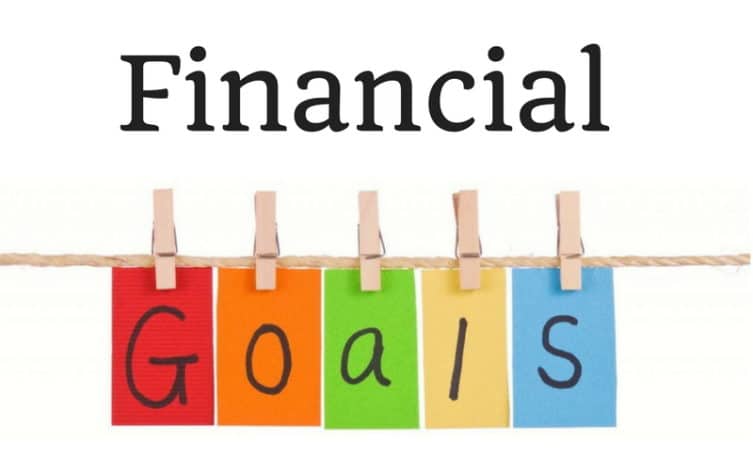Regarding business growth, social media analytics might feel like the magic ingredient that turns guesswork into actionable knowledge. I recall the first time I looked through my social media data. I was a little overwhelmed, not knowing what all those figures meant or how they could help my business. However, when I dug deeper, I discovered that these metrics were more than simply data; they were valuable indicators of my audience’s requirements, the performance of my content, and potential avenues for growing my brand’s reach.
In this post, I’ll show you how to use social media analytics to expand your business effectively. In the end, you’ll have a clear plan for leveraging data to improve your online presence. Let’s get started with what you should know.
Social media analytics help organizations understand what their customers want when they want it and how they interact with it. According to Hootsuite, 93% of marketers believe their social media initiatives have enhanced exposure for their firms, while 80% report increased traffic. Using analytics transforms your social media platforms into effective tools for studying audience behavior, fine-tuning your messaging, and focusing on content that produces results.

#1. Select the Right Tools for Your Needs
The wide range of social media analytics tools available today can be intimidating, so choosing the appropriate ones is critical for efficiency and insight depth. Facebook Insights and Twitter Analytics are excellent starting points for understanding platform-specific performance. For example, Facebook Insights provides detailed audience information, like demographics and peak activity times, whereas Twitter Analytics displays tweet engagement and follower growth over time.
Hootsuite Analytics and Sprout Social are strong solutions for corporations managing many social media accounts, as they provide centralized reporting across platforms. Hootsuite Analytics monitors various indicators and offers customizable reports, which are especially valuable for larger teams. Google Analytics is another useful tool that connects your social media stats to your website’s performance. This relationship demonstrates how social media affects website traffic, conversions, and user behavior, allowing you to better assess the ROI of your social activities.
- Pro tip: Use a Social Media Analytics Template to consolidate analytics like engagement rate, follower growth, reach, and CTR across platforms. This visual depiction can illustrate trends over time, giving you insights into which campaigns or content kinds work best.
#2. Determine Key Metrics Relevant to Your Business
Once you’ve got the necessary tools, identify the KPIs that are relevant to your business objectives. Not all measurements are equal, and each serves a distinct purpose:
- Engagement Rate: A high engagement rate indicates that followers value your material. Examining interaction allows you to determine which types of posts (such as polls, videos, or instructive information) are most popular with your audience.
- Impressions and Reach: These indicators are essential to brand recognition. Reach reveals how many unique users saw your material, whereas impressions indicate how frequently your content appeared in consumers’ feeds.
- Conversion Rate: Used to determine whether your content generates meaningful actions such as website visits, sign-ups, or purchases.
- Click-Through Rate (CTR): The percentage of readers who clicked on your post link, indicating how effective your CTA is.
- Example: If your business’s goal is to create revenue, CTR and conversion rates are critical indicators. For example, evaluating which posts generate the most hits to your website or product pages might help you improve your content and drive more conversions.
#3. Use Audience Demographics to Tailor Your Strategy
Audience demographics give you a better idea of who is engaged with your material, allowing you to tailor your messaging more successfully. Platforms such as Facebook and Instagram include built-in features that categorize your audience based on age, gender, location, and interests. This information enables you to produce content that resonates on a deeper level with specific target segments.
- Example: If your demographic analysis reveals that your followers are mostly 25-34-year-olds in cities such as Accra and Nairobi, create content that appeals to urban professionals in that age group. This could include writing on job advice, entrepreneurship, or presenting products that align with current trends in those areas. Tailoring your strategy based on region could involve discussing local events, trends, or even language preferences, which will make your material feel more personalized.
#4. Test and Optimize Your Content Using A/B Testing
A/B testing, often known as split testing, is an effective approach for determining what connects most with your target audience. By comparing different variations of a single post, such as adjusting the headline, image, color scheme, or call-to-action (CTA), you can determine which aspects generate the most engagement.
- Example 1: If you’re running a product promotion campaign, try two different versions of the same post. Version A may include a colorful image with a prominent “Shop Now” button, while Version B may include a gentler image with the CTA “Learn More.” Track the clicks, likes, and shares for each iteration to see which design encourages users to engage the most.
- Example 2: For blog post promotion, develop two versions of the teaser text. One option may be a simple inquiry (“Want to grow your brand on Instagram?”), while another could be a list (“Top 5 Tips for Instagram Growth!”). Analyzing engagement rates will allow you to tailor future content based on audience responses.
A/B testing allows you to steadily enhance content performance while learning more about what appeals to your audience with each experiment.
#5. Track Competitor Performance for Insights
Analyzing rival performance might indicate important trends and opportunities in your market. Social media analytics tools like Hootsuite and Sprout Social frequently include competitor tracking features, which provide an overview of how other businesses in your industry perform across various content kinds, posting frequencies, and audience interactions.
To do a competitor analysis, follow these steps:
- Identify your key competitors: Look for brands with a comparable target demographic or companies that operate in your niche.
- Compare Engagement Rates with Follower Growth: This might show you whether your competitors are gaining traction or struggling to connect with their target demographic.
- Review Content Types and Frequency: Determine which formats (e.g., videos, infographics, blog links) result in the most activity for them.
- Example: Assume a competitor is receiving significant interaction with behind-the-scenes content or tutorials, but their promotional postings are underperforming. This could indicate an opportunity for you to prioritize value-driven or instructive material in your strategy, thereby satisfying an unmet audience need.
#6. Schedule and monitor content timing
Content scheduling is critical in social media because each platform’s audience has its peak activity times. Social media insights, particularly technologies like Facebook Insights and Instagram Insights, provide information on when your followers are active. You can then experiment with different publishing times to see what works best for engagement.
- Example: If analytics show that your followers are most active on weekdays between 6 and 9 p.m., schedule posts throughout that time frame to boost visibility. For Instagram, uploading just before peak hours (say, around 5:30 PM) might increase early engagement, providing the algorithm a reason to show your content to more viewers.
For cross-platform posting, consider automated scheduling tools such as Hootsuite or Buffer to streamline your workflow and ensure that posts go up at appropriate times without manual intervention. Many studies, like Sprout Social’s industry research, recommend trying weekdays and altering according to audience feedback.
#7. Establish benchmarks and monitor progress over time
Benchmarks provide a concrete approach to assessing the efficacy of your social media strategy, allowing you to make changes as your brand grows. To establish usable benchmarks, begin with clear, precise goals based on indicators that are relevant to your aims, such as an increase in follower count, engagement rates, or website traffic from social media.
- Goals for the Month or Quarter: Set short-term goals, such as increasing your followers by 10% each month or increasing your average engagement rate by 5% each quarter. Adjust your goals depending on previous performance data and your industry’s average growth rates.
- Track Performance of Specific Content Types: For example, if you launch a new format, such as weekly live Q&As, track its performance against conventional postings over time. Set a goal, such as attaining at least 500 views every live session, and tweak your strategy as necessary.
- Compare Benchmarks to Competitors: It’s beneficial to see how you stack up in your sector. If your competitors are gaining followers at a 15% rate per quarter while you are only gaining 5%, you may consider changing your strategy, frequency, or content kind.
Regularly revising benchmarks keeps your plan flexible and responsive. Use analytics tools to generate monthly reports and identify trends—this data allows you to fine-tune your approach while tracking overall results.
#8. Create High-Value Content Using Analytics
Developing content that continuously engages your audience necessitates using analytics to determine what performs best. Analytics can reveal the most popular formats, subjects, or post styles among your target audience. Based on these findings, prioritize offering high-value content that reflects their preferences.
- Leverage Top-Performing Content Types: If analytics show that video tutorials are the most engaging, consider creating a regular series. For example, a monthly “how-to” video on how to solve a common problem in your niche might become a valued recurrent feature that fans eagerly await.
- Identify Themes and Topics with High Engagement: Look for repeating themes in high-engagement postings. If postings with “productivity tips” or “behind the scenes” stories receive more engagement use these themes more routinely.
- Adjust Formats Based on Platform-Specific Success: Prioritize developing carousel posts for Instagram and infographics for LinkedIn. The goal is to make your content compatible with platform-specific choices.
For example, if statistics reveal that carousel posts on Instagram generate 30% more saves and shares, use this style to transmit instructive content or step-by-step guidance, making your content both useful and memorable to your audience.
A weekly check-in is usually sufficient to monitor short-term trends. Monthly reviews can provide deeper insights and assist in changing your overall plan.
What is the best way to track various metrics across platforms?
Using a social media analytics template will help you arrange all essential variables, maintaining consistency in tracking and identifying patterns across time.
Are Third-Party Analytics Tools Necessary?
If your company relies significantly on social media, third-party solutions such as Sprout Social or Hootsuite can provide more detailed information than the basic metrics provided by most social media sites.
Key Takeaways
- For a full perspective, combine platform-specific analytics with third-party solutions.
- Focus on metrics that are relevant to your business goals, such as engagement, conversion, or reach.
- Use demographic information to personalize your content and increase relevancy.
- Experiment with various content forms to determine what connects with your target audience.
- Review your performance metrics regularly and adapt as needed to continue to improve.
Conclusion
Using social media analytics is similar to having a compass for your business strategy: it shows you where you’re succeeding and where you might need to improve. By devoting effort to understanding your analytics, you can generate more effective, relevant content and accelerate your company’s growth. So, the next time you look at your social media metrics, remember that every data point represents a chance for progress and growth. Are you ready to use analytics to build a stronger business strategy?
- Management Reports: Guidelines for Management Reporting
- Social Audit: Features, Types, and Limitations (+ Detailed Guide)
- KEY METRICS: Essential Metrics Every Business Should Have
- MARKETING METRICS: Meaning, Examples, Email, Social Media & Content Marketing
- Top HR Metrics Examples In 2024




